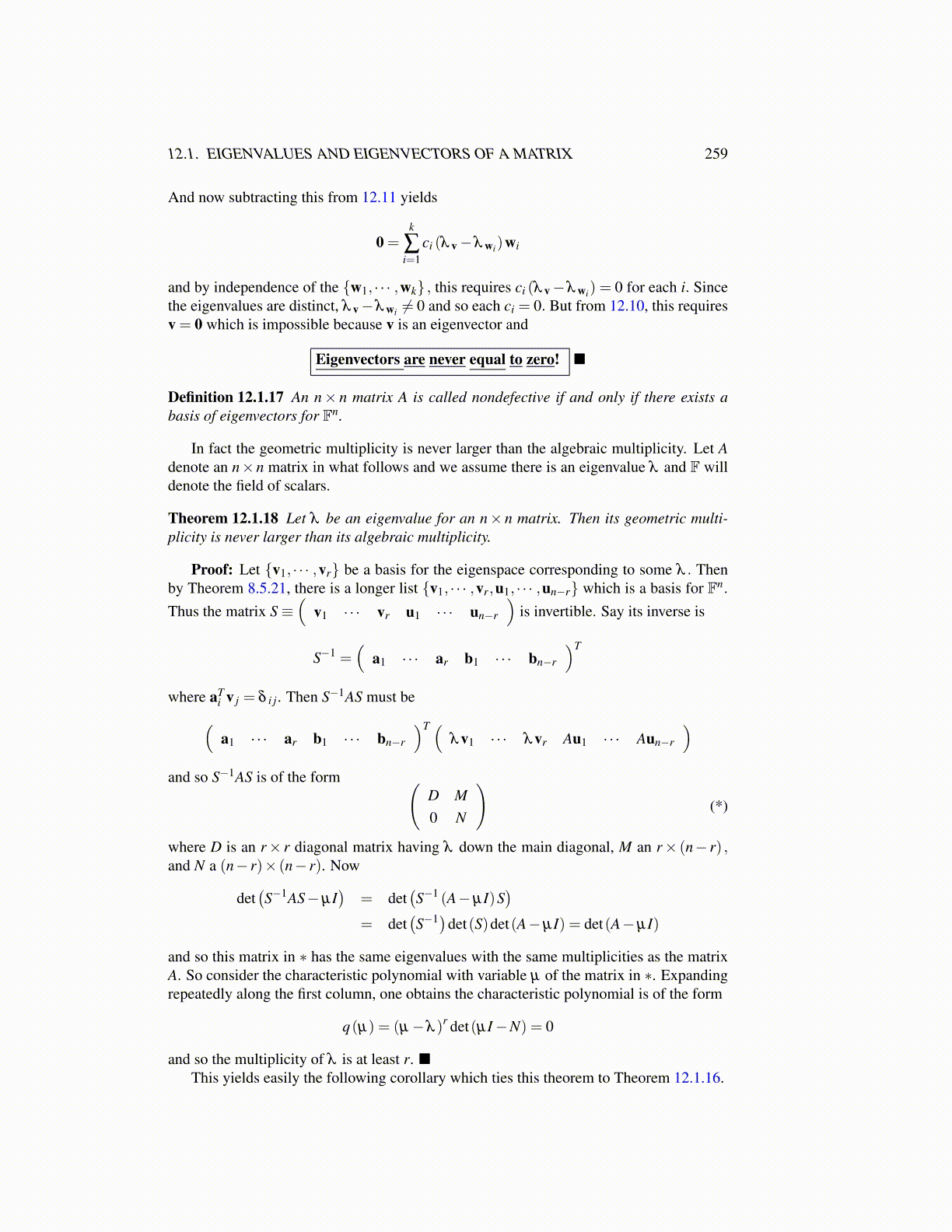
12.1. EIGENVALUES AND EIGENVECTORS OF A MATRIX 259
And now subtracting this from 12.11 yields
0 =k
∑i=1
ci (λ v−λ wi)wi
and by independence of the {w1, · · · ,wk} , this requires ci (λ v−λ wi) = 0 for each i. Sincethe eigenvalues are distinct, λ v−λ wi ̸= 0 and so each ci = 0. But from 12.10, this requiresv = 0 which is impossible because v is an eigenvector and
Eigenvectors are never equal to zero! ■
Definition 12.1.17 An n× n matrix A is called nondefective if and only if there exists abasis of eigenvectors for Fn.
In fact the geometric multiplicity is never larger than the algebraic multiplicity. Let Adenote an n×n matrix in what follows and we assume there is an eigenvalue λ and F willdenote the field of scalars.
Theorem 12.1.18 Let λ be an eigenvalue for an n× n matrix. Then its geometric multi-plicity is never larger than its algebraic multiplicity.
Proof: Let {v1, · · · ,vr} be a basis for the eigenspace corresponding to some λ . Thenby Theorem 8.5.21, there is a longer list {v1, · · · ,vr,u1, · · · ,un−r} which is a basis for Fn.
Thus the matrix S≡(
v1 · · · vr u1 · · · un−r
)is invertible. Say its inverse is
S−1 =(
a1 · · · ar b1 · · · bn−r
)T
where aTi v j = δ i j. Then S−1AS must be(a1 · · · ar b1 · · · bn−r
)T (λv1 · · · λvr Au1 · · · Aun−r
)and so S−1AS is of the form (
D M0 N
)(*)
where D is an r× r diagonal matrix having λ down the main diagonal, M an r× (n− r) ,and N a (n− r)× (n− r). Now
det(S−1AS−µI
)= det
(S−1 (A−µI)S
)= det
(S−1)det(S)det(A−µI) = det(A−µI)
and so this matrix in ∗ has the same eigenvalues with the same multiplicities as the matrixA. So consider the characteristic polynomial with variable µ of the matrix in ∗. Expandingrepeatedly along the first column, one obtains the characteristic polynomial is of the form
q(µ) = (µ−λ )r det(µI−N) = 0
and so the multiplicity of λ is at least r. ■This yields easily the following corollary which ties this theorem to Theorem 12.1.16.